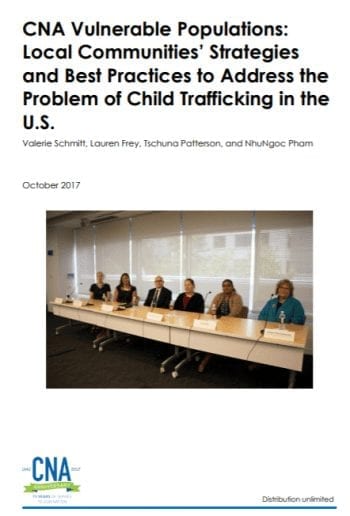
CNA Vulnerable Populations: Local Communities’ Strategies and Best Practices to Address the Problem of Child Trafficking in the U.S.
Child trafficking is a pervasive criminal justice and public health concern in the United States. Over the past 17 years, law enforcement agencies have made great strides in understanding child trafficking networks, investigating child trafficking cases, bringing traffickers to justice, and restoring freedom to children trafficked for sex and labor. Law enforcement agencies are frequently the first contacts for child victims of trafficking and serve as community leaders for local anti-trafficking initiatives. While law enforcement agencies have grown in their capacity to identify and respond to child trafficking situations, key challenges persist in victim identification, victim engagement and support, and investigation protocols.
This document provides a broad overview of the challenges facing law enforcement agencies and how interdisciplinary partnerships are being used across the country to overcome these barriers and ensure a comprehensive approach to curbing child sex and labor trafficking.
